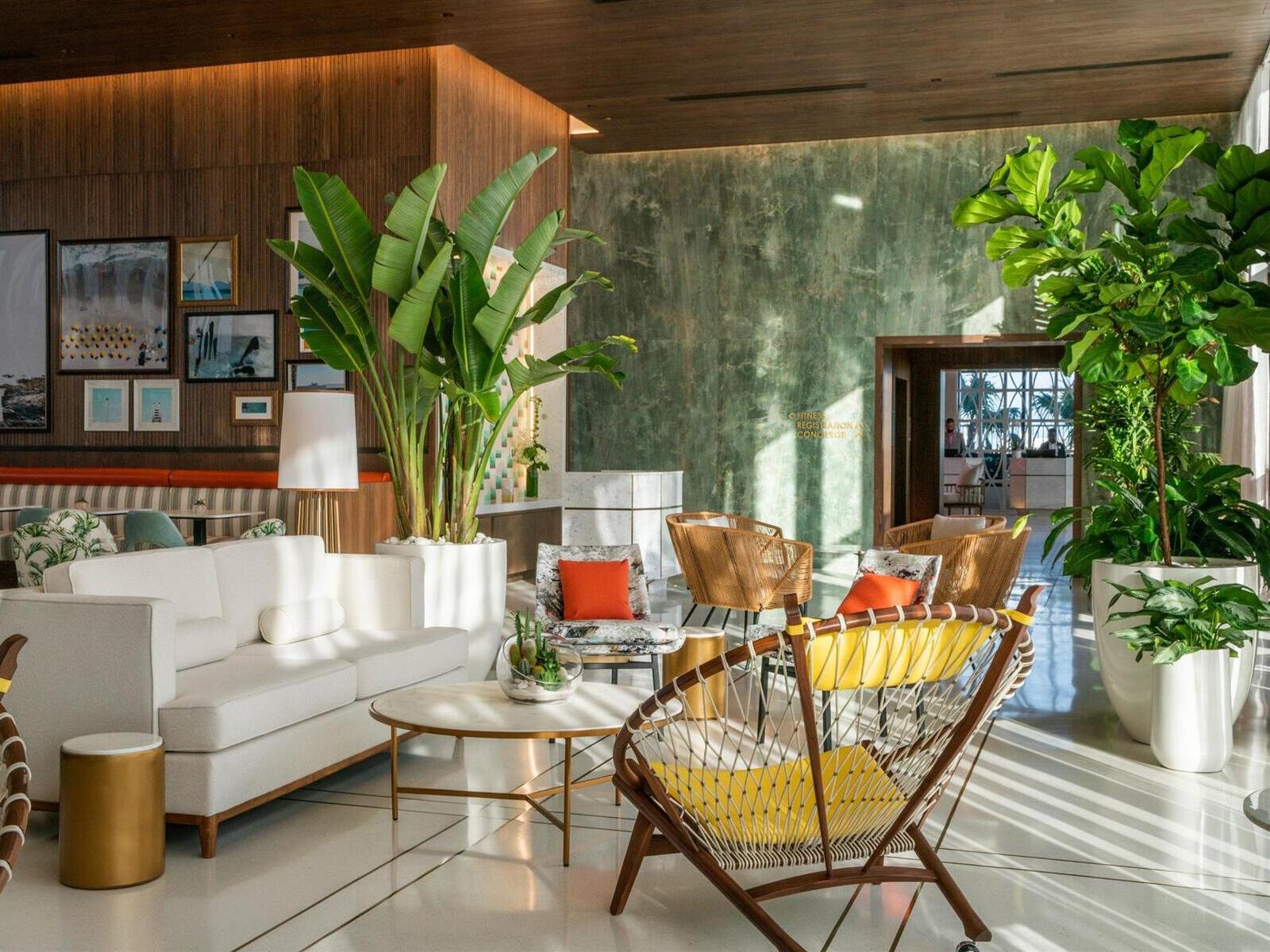There is no doubt that bigger is better when it comes to houseplants. Who doesn’t adore having a lush, green plant as the focal point of their space? They not only look great, but some may filter the air, some bring energy, and all instill a sense of nature in an interior space—which is very beneficial for city inhabitants.
Even if you don’t have the best green thumb or the time to take care of a variety of plants around the living room of your house. Whatever the case, these 14 large plants listed below will look fantastic in your interior space AND they are easy to care for!
Related article: Interior Decorating With Plants
Table of Contents
14 Best Large Indoor Plants And Care Tips
Here are the best large indoor plants for busy homeowners and those that need easy to care for botanical beauty!
1. Fiddle Leaf Fig (Ficus Lyrata)
Ficus Lyrata, often known as the fiddle-leaf fig, is one of the best large indoor plants with exceptionally big, deeply veined, glossy, violin-shaped leaves that grow erect on a smooth stem. If you can place a fiddle-leaf fig tree in a floor-standing container where it can be allowed to grow to at least 6 feet tall, it makes the ideal centerpiece for a living room show.
Fiddle Leaf Figs are simple to grow and care for provided you discover the right position for them and master the watering routine. It performs best in bright, indirect light, such as an east-facing window. If there is too much light, you may detect brown streaks on the leaves, which might be an indication of sunburn.
Fiddle’s leaves tend to collect dust, so wash them down with a damp cloth every now and then to ensure optimum photosynthesizing.
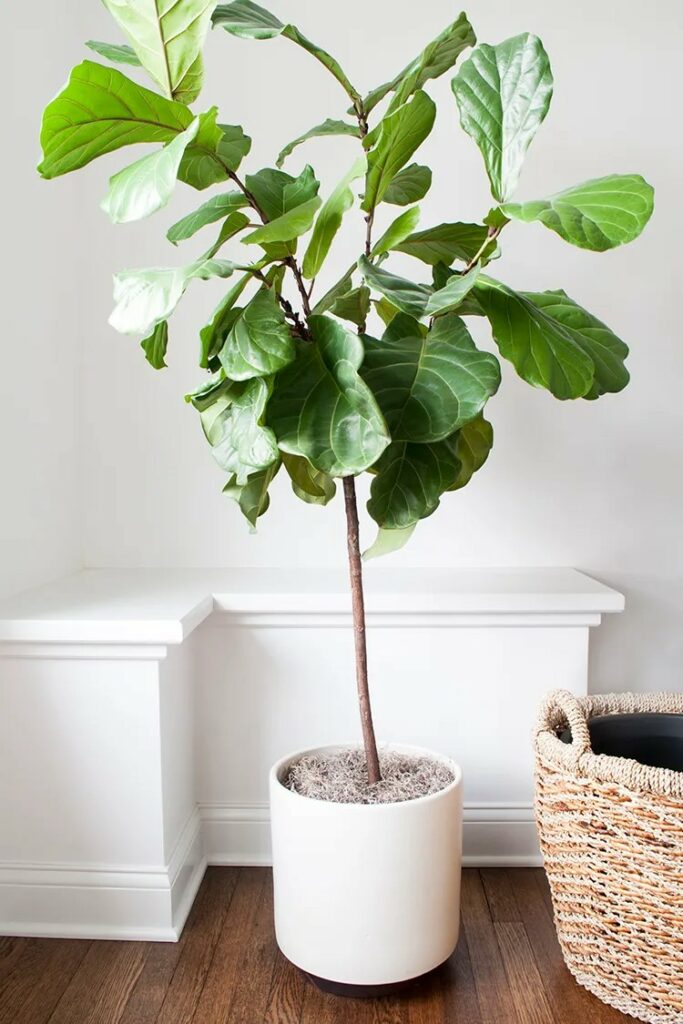
Warning: Bear in mind that this gorgeous plant is toxic to cats and dogs.
Learn about 10 Pro Tips | How To Clean Plant Leaves
2. Snake Plant (Dracaena Trifasciata)
The snake plant is hailed as an unkillable houseplant that thrives in low light and will also survive in full sun or partial sunlight – especially if you can adapt it to a humid environment by gradually increasing its exposure to direct sunlight, such as in the winter when the sun is less harsh.
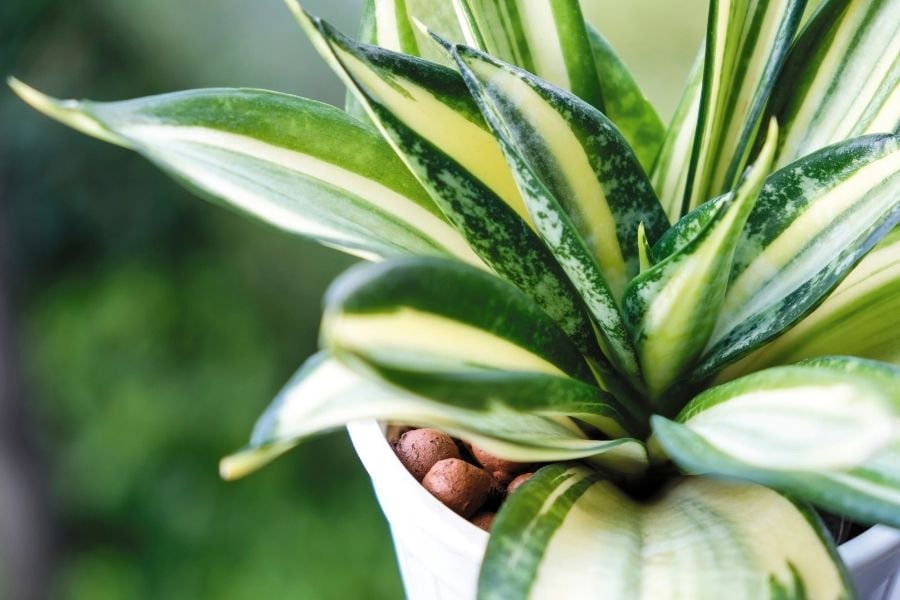
The snake plant has attractive, snakeskin-like leaves as well as a seasonal bloom of fragrant flowers, and it is an excellent choice for busy plant owners because it only has to be watered once or twice a month.
Warning: The snake plant is poisonous to pets, therefore keep this plant away from them.
3. Money Trees (Pachira Aquatica)
The term “Money tree” is derived from Feng Shui concepts, which encourage the notion that the plant would bring luck and prosperity to its owner and the surrounding area. This plant thrives in low-light conditions, requires little watering, and is great for apartments and other small spaces. It is also thought to reduce tension and anxiety when it is present.
Money trees need a little help balancing their light intake. They thrive with a mix of bright and indirect light – make sure to rotate the plant regularly so all parts are soaking in the vitamin D.
Get the gorgeous, super-lightweight fiberglass planters to move your Money trees around easily and let them thrive in style!

Learn more about The 10 Best Feng Shui Plants For Home | Enhance Your Health & Wealth
4. Weeping Fig (Ficus Benjamina)
Weeping Fig is most commonly cultivated as a houseplant in houses, offices, and commercial interior landscaping. With thick, glossy black foliage, this attractive plant has thin branches that curve gently from a light gray base.
When grown indoors, the plants are generally trimmed to maintain them between 3 and 6 feet tall, and their trunks are occasionally braided for ornamental appeal.
Weeping figs grow well indoors in containers filled with soil-based potting mix and placed in bright indirect light or in sunny regions with afternoon shade. During the growing season, water the plant frequently, but allow it to dry out from fall until late winter.

Warning: Weeping fig is toxic to humans and pets.
Learn more about How to Grow Plants in Pots Like a Gardening Expert
5. Bird Of Paradise (Strelitzia)
These towering beauties appear to be on everyone’s plant wish list. If the appropriate conditions are met, the Birds of Paradise plant can grow to be over six feet tall indoors. They thrive in bright direct light, making them ideal for windows facing south or west. Because this is a tropical plant, it will benefit from regular spraying to improve the humidity levels required.

Bird of Paradise is a strong, fast-growing indoor plant that is easier to grow than many tropical plants. It may be moved outside in the summer and thrives for most of the year. Bird of paradise plants can grow up to 30 feet tall outdoors, but only approximately a third of that height indoors.
6. Majesty Palm (Ravenea Rivularis)
Are you looking for an indoor plant that can grow tall, quickly, and stand in a shaded area? Hence you should choose the Majesty palm! With their thick, dark green leaves, they have a lovely appearance.
When grown indoors, Majesty palm will grow by around one foot per year until it reaches four to six feet, at which point proper growth of it rapidly slows down.
Yet, it can be a little challenging to cultivate this plant effectively inside since it needs humid air, a lot of bright and indirect sun and light, and continuous moisture. Experts on houseplants frequently describe them as “difficult”.
Learn more about House Plants That Like Direct Sunlight: 10 Sun-Loving Beauties

7. Parlor Palm (Chamaedorea Elegans)

The Parlour palm is a small indoor palm with light green fronds. Since Victorian times, it has been a favorite house plant, where it was displayed in the Parlor, the nicest room in the home. It is frequently offered as clumps of numerous young plants.
The Parlor palm is a low-maintenance plant that thrives in low light and dry conditions. It’s also an effective air purifier, capable of filtering and cleaning stale air. It grows slowly and can produce sprays of small yellow flowers followed by black fruits when ripe.
Grow your Parlor palm in-house plant compost in a sunny, shady location for the best results. Throughout the growing season, water often and feed once a month. Keep the compost dry over the winter. In the spring, repot pot-bound plants.
Looking for low light plants? Have a look at 10 Low Light Plants that Grow In The Dark
8. Fishtail Palm (Caryota)
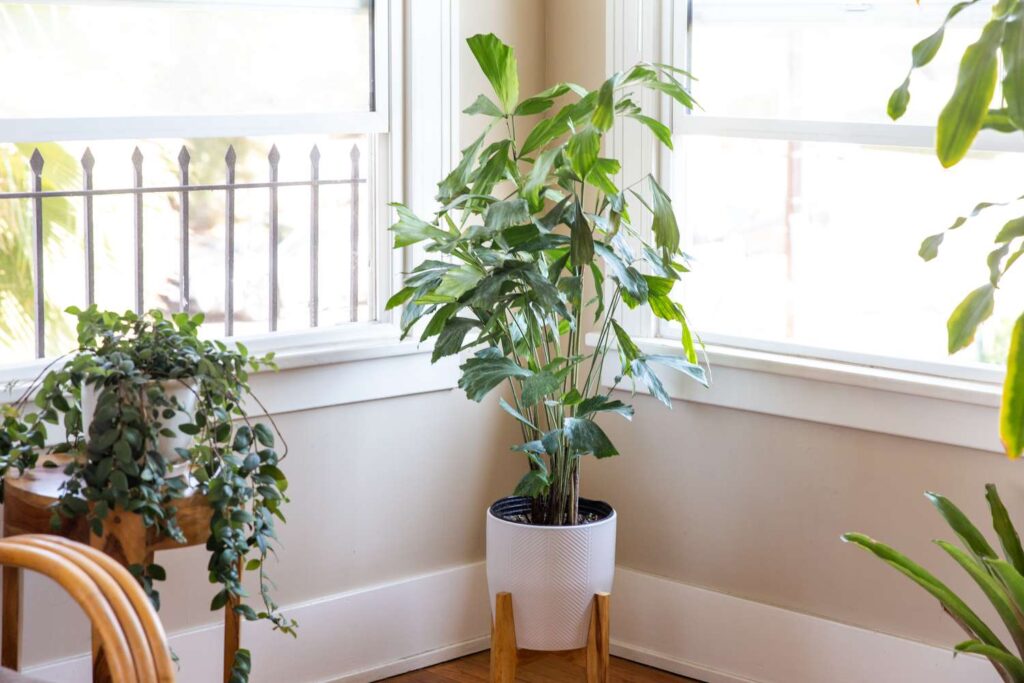
Fishtail palms are known for their unusually shaped leaves. The name comes from the fan-like, rough-edged leaves, which roughly resemble a fish’s tail fin. Fishtail palms are commonly seen growing indoors in big places such as foyers and atriums, where they are planted in enormous pots.
Fishtail palms can blossom and produce fruit and make a huge statement, however, they do not often flower inside. Since they demand a lot of bright light and humidity to thrive, Fishtail palms do much better if you can put them outdoors for part of the year. At the very least, give them direct morning light but protect them from the afternoon sun.
The best way to do this is to grow them in extremely lightweight planters so you can move them around easily, fiberglass planters are exactly what these plants need!
Warning: All parts of fishtail palms are considered toxic to both people and pets.
9. Yucca Plant

Yucca is a genus that includes around 40 different perennial plants, shrubs, and trees. Yucca Gigantea (also known as Y. guatemalensis and Y. elephantipes) and Yucca aloifolia are popular houseplants.
They are very appealing, resembling agave or dragon plants. Some plants grow quickly, up to two feet per year, while others grow slowly, approximately 5 inches per year. They are all drought tolerant and thrive in indirect sunlight and bright, indirect light indoors.
Reminder: All yucca plant parts are harmful to dogs and cats.
10. Norfolk Island Pine (Araucaria Heterophylla)
While this needled tree resembles a pine tree, it is more closely connected to an orchid. Norfolk pines love bright light and enjoy humidity, so they thrive in a warm, south-facing window.

Consider using a pebble plate, which is a shallow dish filled with pebbles and water, to keep the air surrounding the tree wet. It may also maintain humidity if it is kept near other plants.
Top tip: Water them when the top soil feels dry to the touch, making sure it does not dry out in between waterings, preferably once a week.
11. Australian Tree Fern (Sphaeropteris Cooperi)

The Australian tree fern can add a tropical touch to any interior space. This tree fern may easily reach a height of 20 feet and a spread of 15 feet. The fern has a single trunk with a hairy look.
Although Australian tree ferns prefer shade in general, they may also survive in partial or dappled sun areas with six hours of light each day.
Top tip: Maintain constant moisture in the soil. Tree ferns in Australia are not drought-tolerant and require weekly irrigation.
12. Corn Plant (Dracaena fragrant)

The Corn plant is a tropical African evergreen tree that has been popular as an indoor plant in Europe since the mid-1800s, and in the United States since the early twentieth century.
Corn plants slowly, with thick canes or stem producing long, thin leaves that rise vertically like corn stalks. Their growing pattern also gives them the appearance of palm trees, or tall plants which is why they’re frequently referred to as “fake palms.” They make wonderful houseplants since they are tall and thin, often reaching just 4 to 6 feet tall in pots.
Bring a tropical vibe to your home by picking up a plant in a high-quality planter at Planters Etc.
Warning: You should avoid this plant if you have cats or dogs because dracaena is poisonous to both.
13. Madagascar Dragon Tree (Dracaena Marginata)

Tall indoor plants like Dracaenas and Dragon Trees are really simple to grow. They are ideal for both extremely busy people and novice gardeners. These like low to moderate light levels; intense sunlight will scorch their leaves.
Because dracaenas can withstand drought conditions, you don’t need to water them frequently. One of the biggest reasons why a plant dies is from being overwatered. This plant may be watered as frequently as every three weeks, depending on how much light it gets.
Warning: Because the Dragon tree is hazardous to animals if consumed, keep pets away from it.
14. Olive Tree (Olea Europaea)

If a dream Mediterranean vacation isn’t in the cards, an indoor olive tree may bring that wonderful beach appeal into your house. These lovely plants with long, thin branches and green leaves may be quite easy to care for in the correct circumstances – just think of the arid locations they naturally call home for some inspiration.
Yet, olive trees are basically not meant to be grown indoors. Be aware that these fruit-bearing trees need a lot of direct sunshine to produce fruit since they love it and need to be pollinated like any other tree. Moreover, they grow trees quite slowly. Yet, olive trees are hardy plants that may thrive for several years if properly cared for.
Care Tips For Large Indoor Trees And Plants
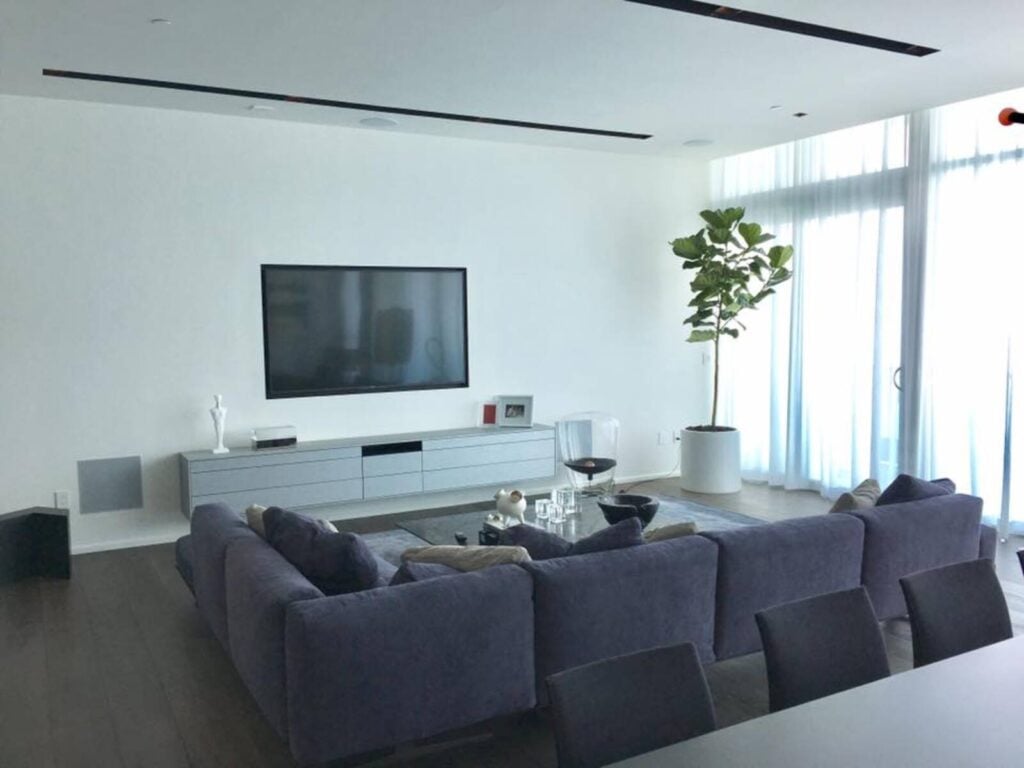
Provide Adequate Light For Your Plants
One of the most prevalent causes of plant mortality is insufficient light levels, which include both too little and too much light. Make sure you know what type of plant you have and do some research on it.
Put your plants near a natural or artificial light source; however, keep in mind that simply placing your plants near direct sun or a window during the short days of winter will not be quite enough light for most plant species.
Yet, because photoreceptors in plants only absorb particular wavelengths of light, purchasing grow lights may be the only viable option in many circumstances. Most plants will thrive if they are exposed to 15-16 hours of light every day, whether it be natural sunshine or artificial light.
Master Watering
Insufficient watering is frequently to blame when plants begin to fade – however, contrary to common perception, it’s not always for lack of effort on the side of the owner; many plants practically drown to their deaths in their pots!
If your plants are discolored, wilting from the stem to the leaves, or dropping lower leaves, they may be overwatered. Apart from taking a break from watering can ensure sure your planter has drainage holes at the bottom of tall plant so that excess water may escape without hurting your plant.
Underwatering, on the other hand, is likely to be the cause of your plants’ leaves drooping from the tips, turning brown around the edges, or dropping entirely too soon.
Don’t have drainage holes for your pots? Learn to Make Drainage for Potted Plants in 4 Easy Steps
Trim Or Prune
Container gardening requires the removal of dead leaves and unhealthy buds. The majority of leafy plants will prune themselves, but it will take time, so it is best to do it manually with garden equipment. Keep in mind that most trimming should be undertaken following a strong bloom in order to allow your plants room to “breathe”.
Many people feel that caring for potted plants is difficult. Some gardeners believe that container gardening is more convenient than traditional gardening since the pots may be moved and the environment to which they are exposed can be controlled.
If you intend to create your own container garden, you should go through our selection of garden containers, pots, and planters. We have a wide range of colors, sizes, and forms!
Relate article: Simple Guide To Prune Houseplants

Get The Look With Our Luxury Planters
See Our Planters Used By Professionals And Homeowners
Learn how you can use planters to create amazing spaces from the Philadelphia International Airport to the Gates Hotel South Beach in Miami.
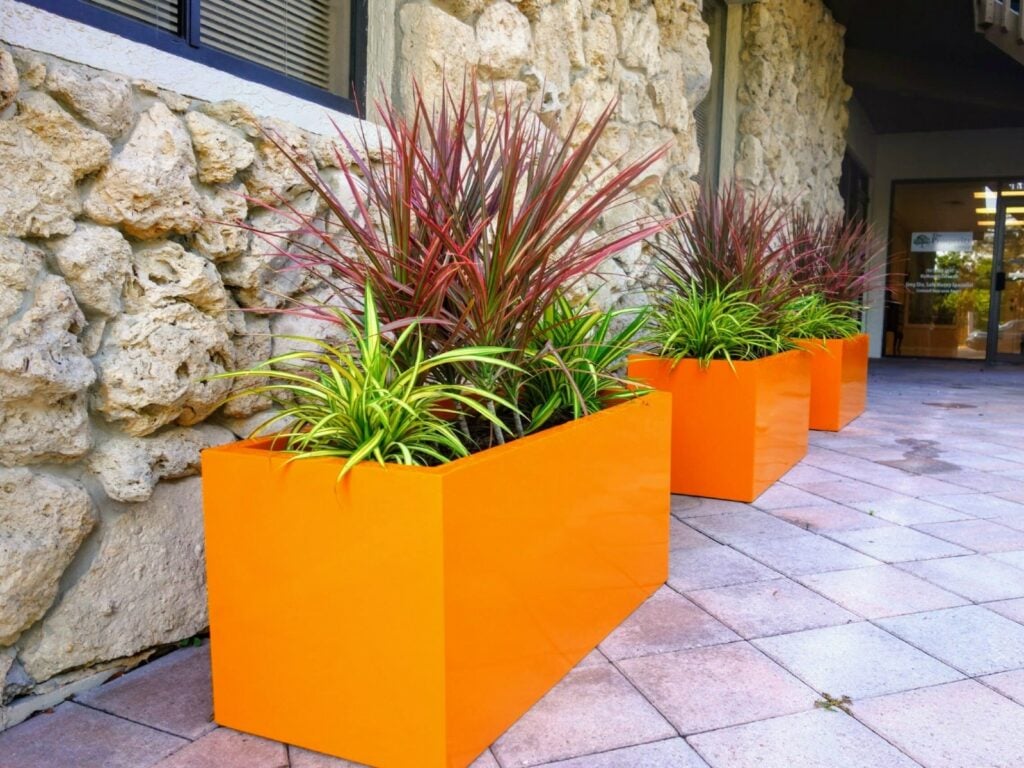
Planters Etc Offers The Best Planters For Your Indoor Plants
Using an aesthetic planter that complements the beauty of your plant is a no-brainer for your interior space, and we have just that!
With over 70 models available in various colors, shapes, and sizes, Planters Etc provides the best planters to complement the beauty of your house.
Our plant pots look great in both indoor and outdoor settings and can withstand extreme temperatures since they are constructed of the strongest fiberglass materials available.
All of our planters come with an industry-leading guarantee, underlining the dedication and value of our fiberglass planters.
If you’re looking for gorgeous pots for these exquisite plants, simply visit our online store and save 10% on your first purchase!
